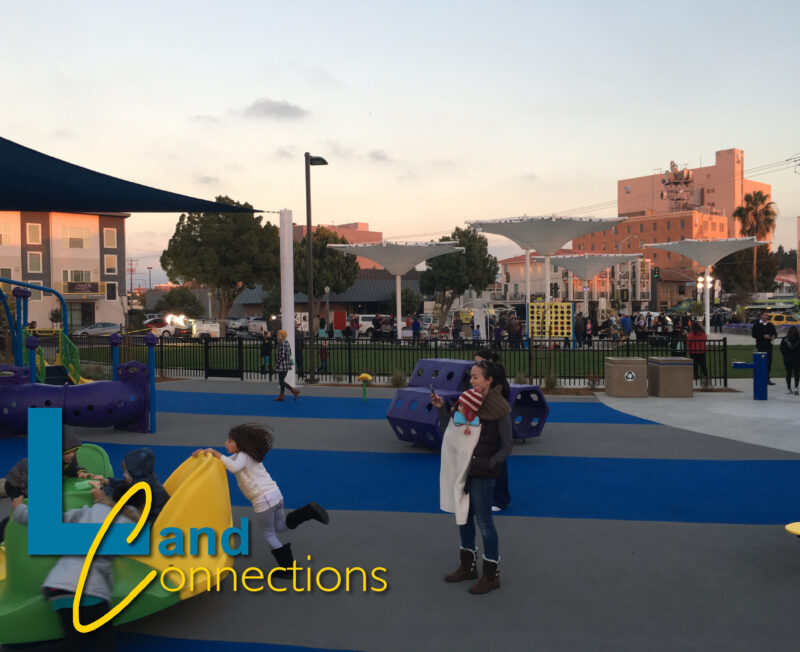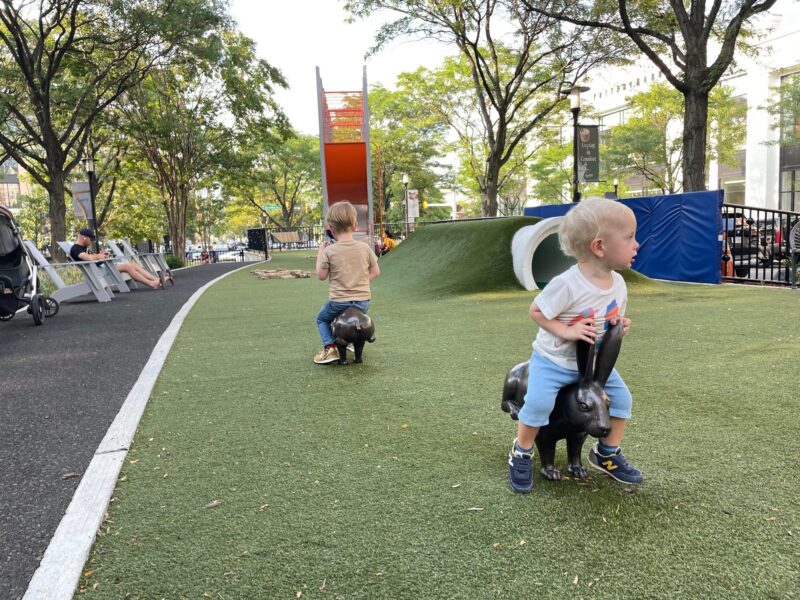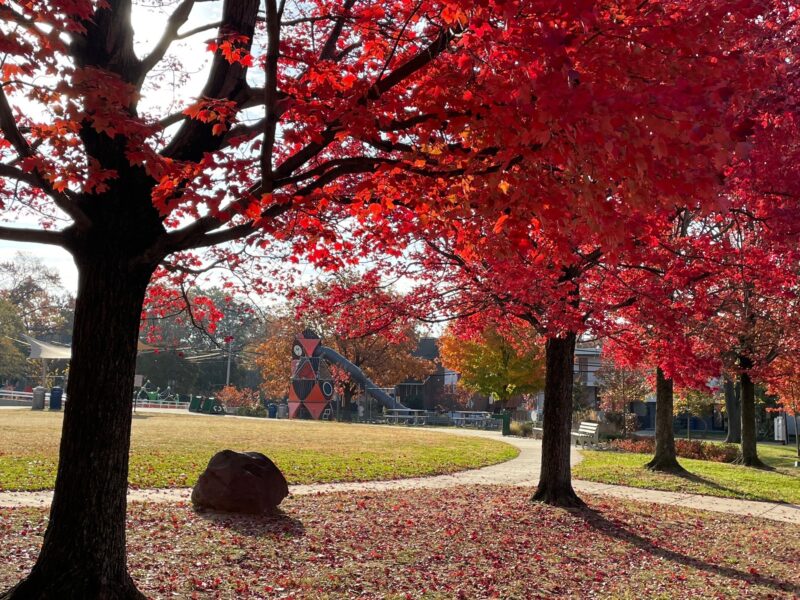
Land Connections – Better with Pockets: Embracing Pocket Parks

As a mother of young children living in an urban area, I am always on the lookout for outdoor spaces where we can enjoy time together “out of the stroller.” Three of our most well-visited parks within a 15-minute walk of my home would be classified by most districts as “pocket parks.” All are under two acres in size, and one would be better measured in square feet. Yet, these spaces provide exactly the type of access to the outdoors that my family needs.
The term “pocket park” is typically used to classify parks of the minimum recommended size in a City or District’s planning typologies. For example, parks may be put under the following umbrella typologies—pocket, neighborhood, community, regional, or other (open space, trail, joint-use, etc.)—depending upon their size, amenities, and target audience. Pocket parks typically measure two acres and may feature a single play structure (these are sometimes referred to as “tot lots”), sport courts, a walking loop, benches or other seating, or outdoor exercise equipment.

The beauty of a pocket park is that it can be tailored to provide specific amenities to nearby residents. For example, a pocket park in a dense urban area might offer a small, fenced dog park to cater to apartment-dwelling dogs and their owners. Another in an area more populated by families or older residents might feature outdoor exercise equipment along with play opportunities for children. One of our frequently visited local pocket parks is situated on a sloping site, and features innovative stormwater management bioswale components, along with educational signage, as well as a basketball court, walking loop, cafe-style tables, and two play structures-—all within a two acres footprint.

These pockets of nature are invaluable resources to those who live nearby. Simply walking outdoors, especially in a park environment, has been linked in many studies to increased mental and physical health. Moreover, proximity to parks has been associated with increased single- and multi-family housing values.
A critical part of the long-term success of a pocket park is proximity to where people live. Pocket parks are especially attractive when they are a quick walk from home, rather than requiring users drive to use transit for access. Standards vary, but leading scholarship recommends planning for a radius of between one-quarter and one-half mile around a park to approximate the residents who will be able to comfortably walk to the park. One-half mile works out to approximately a ten-minute walk, so long as there are no major vehicle thoroughfares or natural barriers along the route. The following table produced by Smart Cities shows how even planning a park with a service area of one-quarter mile can service thousands of residents in densely developed areas.
| Neighborhood Example | Density (Units per Acre) | People per Acre (2.5 per Unit) | Population in 1/4 mile buffer (126 acres) | Population in 1/2 mile buffer (503 acres) |
| Residential near Charlotte, NC | 5 | 12 | 1,570 | 6,283 |
| Los Angeles or Emeryville, CA | 10 | 25 | 3,141 | 12,566 |
| Rowhouses in Capitol Hill, DC | 20 | 50 | 6,283 | 25,132 |
| High-rise complex in Detroit, MI | 30 | 75 | 9,424 | 37,698 |
| Standard block in Brooklyn, NY | 60 | 150 | 18,849 | 75,397 |
| Belltown high rises in Seattle, WA | 90 | 225 | 28,273 | 113,096 |

Pocket parks are also well suited to creative development and management models, including joint partnerships or public-private partnerships (P3s). The smallest of my nearby pocket parks is a public park, privately developed and maintained, within a commercial shopping district. This park is located centrally within an outdoor shopping plaza, and features a single, linear play structure, kid-friendly climbable sculptures, and loose play in the form of “giant Jenga” blocks. It is consistently, predictably, busy. Whether occupied by caregivers with children trying to run off energy while the rest of their party sits in a nearby restaurant, or by parents leisurely sipping coffees and scrolling the news on weekend mornings while children play in the sun, this little site is providing a valuable amenity for the local community.
In conclusion, a good pocket park – one that fits the needs of the local community and is located within a ten-minute walk of dense housing developments – is not only good for the physical and mental health of residents, but is good business too. Many park districts may prefer larger parks when possible, and parks larger than two acres certainly play an important role in any parks system. However, where larger parks are not feasible, or where parkland is only available on infill lots, in already densely developed areas, pocket parks can pack a punch.

Sources
About the Author

Alison Kelly, PLA, LEED AP ND is a Landscape Architect at O’Dell Engineering. She has over 11 years of experience in the industry and holds a Master of Landscape Architecture from the University of Colorado at Denver. She is a passionate designer who believes that play spaces of all shapes and sizes make the world a better place!
Learn More
For previous Land Connections articles, click here.
For information on joining the O’Dell Engineering team, click here.
To see our landscape architecture project experience, click here.
Go Back